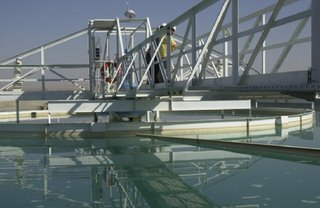National Center for Soybean Biotechnology Expands With Soybean Genome Mapping Facility

“This facility is instrumental in helping Missouri soybean producers develop improved soybean varieties,” said Dale R. Ludwig, MSA executive director/CEO. “Through funding supported by U.S. Senators Kit Bond and Jim Talent, Missouri remains ahead of the class in life science research.”
Renovations supported by Bond and the MU College of Agriculture, Food and Natural Resources gave $2 million toward the crop genomics laboratories in the Agriculture Building. Also, a National Science Foundation grant and matching funds program provided more than $1 million for genome mapping equipment.
The University of Missouri-Columbia was recently designated by U.S. Congress as the site for the NCSB. Its foundation was the Center for Soybean Genomics and Biotechnology, previously formed at MU in support of interdisciplinary research on the genomic structure and function of soybean genes. The ultimate goal of the NCSB is to provide innovative molecular approaches that can be applied toward soybean improvement.
The NCSB is a collaborative program among scientists at MU, the U.S. Department of Agriculture’s Agricultural Research Service Plant Genetics Unit in Columbia and the Donald Danforth Plant Science Center in St. Louis, Mo. There are currently more than 25 researchers working together from diverse fields including agronomy, microbiology and plant pathology, biochemistry, animal science, food science, molecular biology and agricultural economics.
In addition to receiving the NCSB support, scientists working in the center continue to be highly competitive for other funding from a variety of sources, including the Missouri Soybean Merchandising Council, federal agencies and private industry.
Strategically located in the heart of the nation, the NCSB aims to foster research partnerships with institutions in the Midwestern and Southern states, regions where soybeans are a major crop. Research within the NCSB focuses on major problems that affect soybean production and use. The Center also provides educational opportunities for students and outreach services to producers, public agencies and consumers.


 During the 1950s, Iraq’s palm orchards produced more than 600 varieties of dates and, by some estimates, accounted for nearly 80% of the world’s supply. During the country’s golden era there were more than 30 million fruit producing trees.
During the 1950s, Iraq’s palm orchards produced more than 600 varieties of dates and, by some estimates, accounted for nearly 80% of the world’s supply. During the country’s golden era there were more than 30 million fruit producing trees.

 Aboud Ahdim Abbas Mohammad, 56, is continuing a family date farming tradition that began in the 1880s.
Aboud Ahdim Abbas Mohammad, 56, is continuing a family date farming tradition that began in the 1880s. 












 Tractor owners are not charged for the repairs.
Tractor owners are not charged for the repairs. U.S. Ambassador to Iraq Zalmay Khalilzad and President Massoud Barzani of the Kurdistan regional government toured the repair shop in Erbil.
U.S. Ambassador to Iraq Zalmay Khalilzad and President Massoud Barzani of the Kurdistan regional government toured the repair shop in Erbil. Increased farm revenue bodes well for dealers who hope to see a rise in sales of other farm equipment, implements and repair services. This program will directly expand cultivated lands by more than 111,000 acres. Agriculture officials estimate that 5,000 working tractors will help produce more than 67,500 metric tons of additional wheat, generating $4.7 million in annual grain sales.
Increased farm revenue bodes well for dealers who hope to see a rise in sales of other farm equipment, implements and repair services. This program will directly expand cultivated lands by more than 111,000 acres. Agriculture officials estimate that 5,000 working tractors will help produce more than 67,500 metric tons of additional wheat, generating $4.7 million in annual grain sales.





